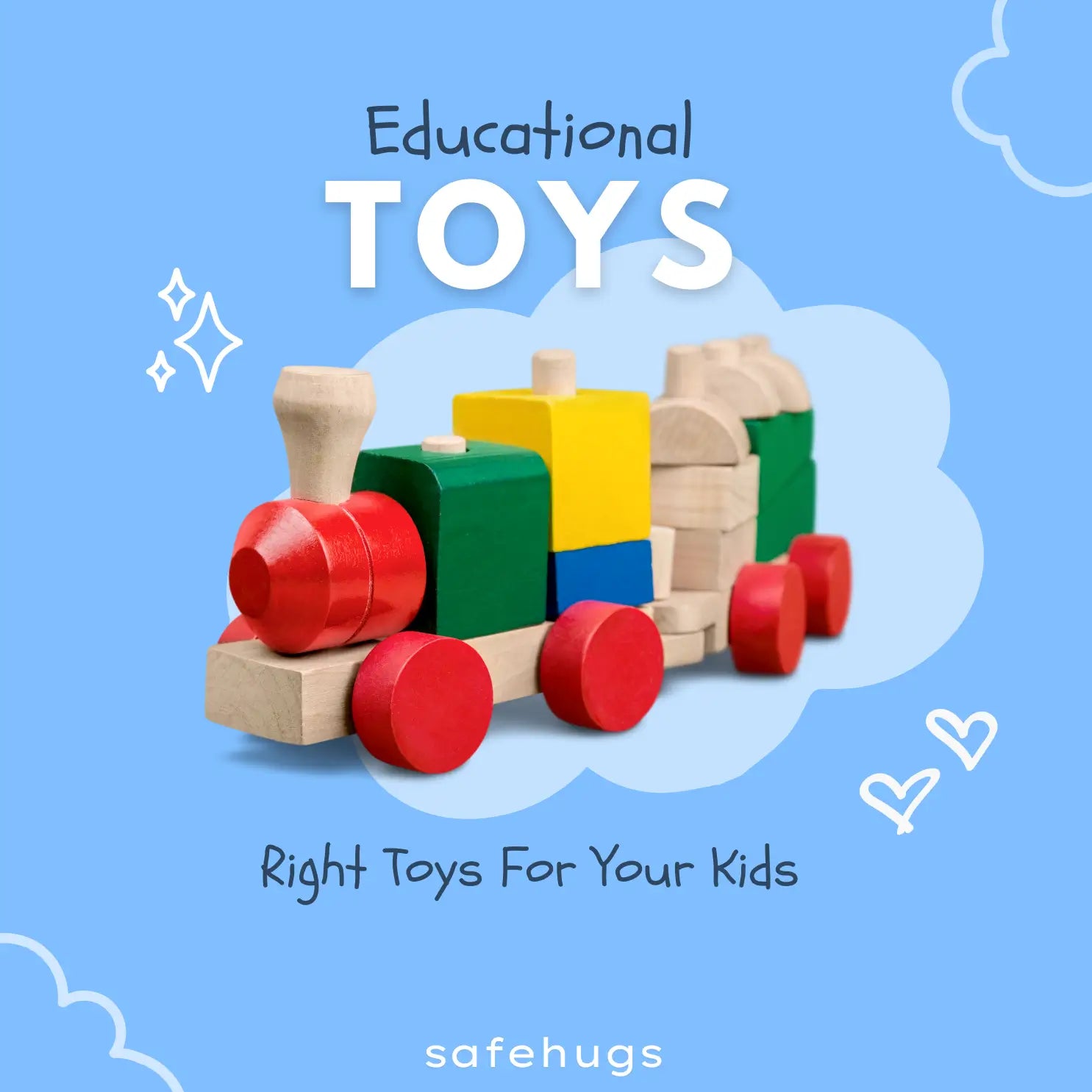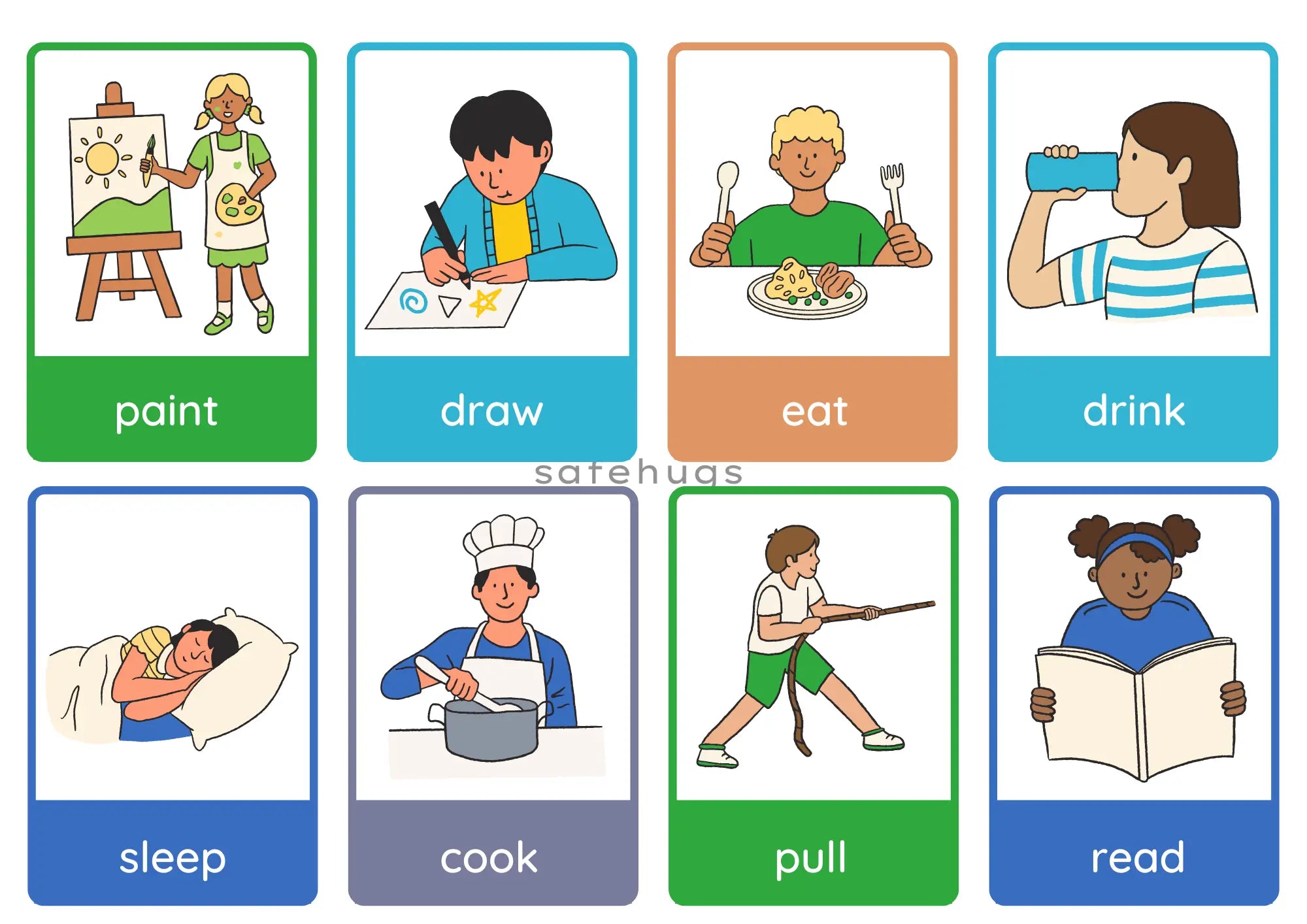Healthy Food for Children: What Every Parent Should Know
Table of Contents
As parents, ensuring our children eat nutritious food is one of the most important responsibilities we have. A healthy diet not only supports physical growth but also enhances brain function, strengthens immunity, and lays the foundation for lifelong well-being. In this blog, we will explore the importance of healthy eating, the impact of nutrition on child development, and practical ways to introduce wholesome food to kids.
What is Healthy Food for Children?
Healthy food for children is essential for their growth, development, and overall well-being. A balanced diet should include key nutrients to support their physical and mental health. These essential components include:

-
Proteins
-
Sources: Lean meats, fish, eggs, dairy, legumes
-
Function: Supports muscle growth and repair
-
Carbohydrates
-
Sources: Whole grains, fruits, vegetables
-
Function: Provides energy for daily activities and growth
-
Healthy Fats
-
Sources: Nuts, seeds, avocados, olive oil, fatty fish (e.g., salmon, mackerel)
-
Function: Supports brain development and overall health
-
Vitamins & Minerals
-
Sources: Fruits, vegetables, dairy
-
Function: Boosts immunity, aids in healthy bone and organ development
Encouraging kids to eat a variety of foods from each group helps establish healthy eating habits early on, which can lead to a healthier lifestyle.
For Toddlers and Preschoolers (1-5 years)
Children in this age range require foods that promote growth, brain development, and energy for active play. Focus on providing the following:
| Proteins | Lean meats, eggs, beans, lentils | Supports growth and muscle development |
| Carbohydrates | Whole grains, brown rice, oats, whole wheat pasta | Provides energy for daily activities. |
| Fruits & Vegetables | A colorful variety of fruits and vegetables | Rich in essential vitamins and minerals for immunity and growth. |
| Healthy Fats | Avocados, nuts (if safe), seeds, olive oil, fatty fish like salmon | Supports brain development and overall health. |
For School-Aged Kids (6-12 years)
As kids grow more active, their nutritional needs expand. Ensure they get a well-rounded diet with the following foods:
| Proteins | Chicken, turkey, tofu, beans, fish | Important for muscle growth and overall development. |
| Carbohydrates | Whole grains, sweet potatoes, quinoa | Provides sustained energy for increased physical activity. |
| Vitamins & Minerals | Dark leafy greens (e.g., spinach, kale), fruits (berries, oranges), dairy | Provides calcium for bone health and vitamins for immune support. |
| Healthy Fats | Nuts, seeds, chia, flax, olive oil, fatty fish like mackerel | Promotes brain development and overall health. |
Healthy vs. Unhealthy Food Choices
It's important to understand the difference between healthy and unhealthy food for kids, as this can significantly impact a child’s growth, energy levels, and overall well-being.

Healthy Foods for Children
Healthy foods provide the necessary nutrients to nourish the body, support growth, and promote good health. These include:
-
Fresh Fruits
-
Examples: Apples, bananas, strawberries, blueberries, pears
-
Benefits: Packed with vitamins, minerals, and antioxidants.
-
Vegetables
-
Examples: Sweet potato fries, steamed carrots, peas, corn
-
Benefits: Rich in fiber, vitamins, and minerals.
-
Whole Grains
-
Examples: Oats, brown rice, whole wheat bread, whole grain crackers
-
Benefits: Provide long-lasting energy and are high in fiber.
-
Lean Proteins
-
Examples: Scrambled eggs, grilled chicken strips, cheese cubes, hummus
-
Benefits: Support muscle growth and overall development.
-
Healthy Fats
-
Examples: Avocados, chia pudding, nut butters (peanut, almond)
-
Benefits: Aid brain development and overall health.
Unhealthy Foods for Children
Unhealthy foods often provide little nutritional value and can negatively affect a child’s health. These foods should be limited:
-
Sugary Drinks & Snacks
-
Examples: Soda, candies, fruit juices with added sugars
-
Risks: Contribute to obesity, dental problems, and energy crashes.
-
Fast Foods & Fried Snacks
-
Examples: French fries, deep-fried chicken nuggets, pizza with processed toppings
-
Risks: High in unhealthy fats, sodium, and empty calories.
-
Processed Foods
-
Examples: Packaged chips, sugary cereals, pre-packaged baked goods
-
Risks: Often high in added sugars, unhealthy fats, and preservatives.
-
High-Sugar Breakfast Foods
-
Examples: Frosted cereals, sugary muffins, waffles with syrup
-
Risks: Lead to sugar spikes and crashes, affecting energy levels and focus.
Balancing Healthy and Occasional Treats
While it’s important to prioritize healthy foods, occasional treats are okay in moderation. Developing good eating habits early on, with a balanced approach, helps children maintain long-term health.
Unhealthy Food Options to Limit or Avoid
These foods should be limited or avoided to support healthier eating habits:
-
Processed Foods: Packaged chips, sugary cereals, pre-packaged baked goods.
-
Sugary Snacks & Drinks: Soda, candies, fruit juices with added sugars.
-
Fried & Fast Foods: French fries, deep-fried chicken nuggets, pizza with too many processed toppings.
-
High-Sugar Breakfast Foods: Frosted cereals, sugary muffins, waffles with syrup.
Healthy Food Names List for Kids
Introducing healthy food in an engaging way can make mealtime more enjoyable. Here are some kid-friendly nutritious foods:
| Fruits | Bananas, apples, oranges, berries, mangoes, grapes, pears, kiwis, pineapples, watermelon |
| Vegetables | Carrots, cucumbers, sweet potatoes, spinach, bell peppers, broccoli, peas, zucchini, corn, cauliflower |
| Grains | Brown rice, oats, whole wheat pasta, quinoa, whole grain bread, barley, bulgur, millet |
| Proteins | Chicken, eggs, lentils, tofu, chickpeas, turkey, fish, beans, nuts, peanut butter |
| Dairy | Yogurt, cheese, milk, cottage cheese, kefir, buttermilk |
Making these foods visually appealing and fun (such as cutting fruits into shapes or arranging them into creative patterns) encourages children to eat them.
The Effects of Nutrition on Child Development
A balanced diet plays a crucial role in a child’s physical, mental, and emotional growth.
-
Physical Growth: Key nutrients like calcium, vitamin D, and protein support strong bones, muscle development, and healthy weight.
-
Cognitive Function: Omega-3 fatty acids, iron, and B vitamins improve memory, concentration, and learning abilities.
-
Emotional Well-being: Nutrients like tryptophan and protein help regulate mood by boosting serotonin and dopamine, contributing to emotional stability.
-
Brain Development: Omega-3s, iron, and B vitamins are vital for cognitive growth, impacting memory and learning.
-
Emotional Regulation: A nutritious diet supports mental health, helping to stabilize mood and reduce anxiety through serotonin and dopamine.
-
Gut Health: A healthy gut microbiome, nourished by probiotics and fiber, influences overall well-being and supports the production of serotonin, enhancing emotional health.
Benefits of Healthy Eating in Early Childhood
Instilling good eating habits early can lead to numerous long-term benefits for children. A healthy diet supports not just physical growth, but also emotional and cognitive development, laying the foundation for a well-rounded, healthy future.
-
Stronger Immune System: A balanced diet rich in vitamins and minerals strengthens a child’s immune system, making them less susceptible to illnesses and infections.
-
Reduced Risk of Obesity and Chronic Diseases: Healthy eating habits help prevent obesity by ensuring children get the right balance of nutrients and avoid excessive fats and sugars. This reduces the likelihood of developing chronic diseases like diabetes, hypertension, and heart disease later in life.
-
Better Digestion and Metabolism: A diet high in fiber from fruits, vegetables, and whole grains supports better digestion and metabolism, ensuring that children’s bodies absorb nutrients efficiently and maintain healthy digestive systems.
-
Increased Energy and Focus: Nutritious foods fuel children’s bodies with the energy they need for physical activities and cognitive tasks. A well-balanced diet supports focus and mental clarity, enhancing performance in school and play.
-
Better Sleep Patterns: A balanced diet helps regulate sleep cycles by providing the necessary nutrients that promote healthy sleep. Foods rich in magnesium and tryptophan, like bananas and nuts, can help children relax and fall asleep more easily.
To learn more about the benefits of healthy eating in early childhood, explore our detailed guide here.
Encouraging children to eat healthily from a young age ensures they maintain these habits into adulthood, leading to a lifetime of benefits that include better physical health, improved emotional well-being, and reduced risks of serious diseases.
How to Explain Nutrition to a Child?
Teaching kids about nutrition can be fun and interactive. Here are some effective methods:
-
Storytelling: Use fun stories about superheroes powered by healthy food.
-
Games & Activities: Sorting food into “healthy” and “unhealthy” categories, using food charts, and engaging in memory-matching games with different food groups.
-
Cooking Together: Involve kids in meal preparation to create excitement about healthy food, such as letting them mix ingredients, chop soft vegetables (with supervision), or assemble their meals.
-
Role-Playing: Pretend to be “nutrition detectives” and explore different foods and their benefits.
-
Gardening: Growing herbs or vegetables at home helps children connect with food and understand its importance.
Making nutrition education playful helps children understand and embrace healthy eating habits.
Healthy Fast Food for Kids
In today’s fast-paced world, finding quick yet healthy food is essential. Here are some nutritious fast food alternatives that provide the convenience of fast food with the benefits of proper nutrition:
-
Homemade wraps with whole wheat tortillas, lean protein, and veggies
-
Fruit smoothies with yogurt and nuts
-
Air-popped popcorn instead of chips
-
Baked sweet potato fries instead of regular fries
-
Peanut butter and banana sandwiches on whole grain bread
-
Greek yogurt with granola and fresh fruit
-
Hummus with whole wheat pita bread and vegetable sticks
-
Hard-boiled eggs with whole grain crackers
-
Cheese and avocado toast on whole wheat bread
-
Nut butter and apple slices
These options offer a healthier twist on traditional fast food, providing the convenience of quick meals without compromising on nutrition.
Meal Prepping Tips
For busy parents, meal prepping is a great way to ensure healthy meals are always on hand. Here are some quick meal prep ideas:

-
Batch Cook Lean Proteins: Prepare chicken, turkey, or tofu in bulk. You can use these proteins in wraps, sandwiches, or salads throughout the week.
-
Prep Veggies: Wash, chop, and store a variety of fresh vegetables in the fridge. This makes it easy to add veggies to meals or snacks like wraps, hummus, or salads.
-
Make Smoothie Packs: Pre-portion ingredients for smoothies (fruits, yogurt, nuts) into freezer bags. Just blend with some liquid when you're ready to serve!
-
Bake Healthy Snacks: Prepare homemade granola bars, energy bites, or oatmeal muffins on the weekend to have grab-and-go options available during the week.
-
Create Snack Packs: Portion out healthy snacks like cheese sticks, nuts, or veggie sticks into containers for easy access.
Meal prepping takes just a bit of time upfront but can save you significant time and stress during the week, ensuring your family always has access to healthy meals and snacks.
On-the-Go Snack Ideas for Children
Here are 5-6 more portable snack ideas that are nutritious and easy to pack for busy days:

-
Trail Mix: A combination of nuts, seeds, and dried fruit (without added sugar) makes a filling and energy-boosting snack.
-
Homemade Granola Bars: Make your own granola bars with oats, honey, nuts, and dried fruits for a wholesome, homemade snack.
-
Dried Fruit and Nut Bars: Look for bars made with whole ingredients, or make your own with dates, nuts, and seeds to ensure they’re free of artificial additives.
-
Veggie Chips: Dehydrate or bake veggies like zucchini, kale, or carrots for a crunchy, healthy snack that’s easy to take anywhere.
-
Rice Cakes with Nut Butter: Top a rice cake with your favorite nut butter and maybe some fruit for a quick, satisfying snack.
-
Fruit Leather: Choose or make fruit leather with no added sugar for a naturally sweet and portable snack.
By incorporating these meal prep tips and on-the-go snack ideas into your routine, you can ensure your children always have access to healthy, satisfying options—whether at home or on the move.
For a variety of healthy snack recipes perfect for school, explore our collection here.
Healthy Food for Kids' Party
Parties are often filled with sugary and processed foods, but healthier options can be just as fun and exciting. Here are some creative and nutritious ideas that will make your kids' party a hit:
-
Fruit skewers with yogurt dip
-
Veggie cups with hummus
-
Whole grain mini sandwiches with fun shapes
-
Cheese and whole wheat crackers
-
Homemade fruit popsicles
-
Mini fruit pizzas with whole grain crust, yogurt, and sliced fruit
-
Frozen banana bites dipped in dark chocolate
-
Whole wheat muffins with mashed bananas or carrots
-
Mini veggie and cheese skewers
-
Homemade granola bars with oats, nuts, and dried fruits
-
Rice cakes with peanut butter and sliced strawberries
-
Stuffed mini bell peppers with cottage cheese or hummus
-
Whole wheat quesadilla slices with melted cheese and veggies
-
Dark chocolate-covered almonds (in moderation)
-
Cucumber and cream cheese pinwheels
DIY Food Stations
Make the food fun and interactive by setting up a DIY station where kids can build their own healthy meals:
-
DIY Sandwich Bar: Provide whole grain bread, lean proteins (like turkey, chicken, or hummus), veggies (lettuce, cucumber, tomato), and cheese. Kids can get creative and make their own sandwich masterpieces.
-
Yogurt Parfait Station: Offer plain yogurt with a variety of toppings like granola, berries, nuts, and seeds. Kids can layer their parfaits and customize their snack just the way they like it.
-
Healthy Taco Station: Set up a taco station with whole wheat tortillas, lean proteins (chicken, beans, or turkey), and toppings like guacamole, salsa, lettuce, and cheese. Let kids build their own healthy taco creations.
Healthy Beverages
In addition to food, it's important to offer refreshing, nutritious drinks:
-
Flavored Water with Fruits: Add slices of fruits like lemon, lime, orange, or berries to water for a refreshing and fun twist on plain water.
-
Homemade Smoothies: Make smoothies with fruits, vegetables, and a bit of yogurt or almond milk. Let kids pick their ingredients for a personalized and healthy treat.
-
Fresh Coconut Water: A natural and hydrating drink that's a perfect addition to any party, coconut water is packed with electrolytes and is a healthier alternative to sugary drinks.
Presenting healthy food in creative ways and giving kids the chance to customize their snacks will make it easier for them to enjoy nutritious options while having fun at the party.
The Dangers of Unhealthy Food for Kids
Consuming unhealthy food regularly can lead to various health issues:
-
Obesity and weight-related issues
-
Increased risk of diabetes and heart disease
-
Weakened immunity
-
Poor academic performance due to lack of focus
Limiting sugary, fried, and highly processed foods is crucial for children’s overall health and well-being.
Providing children with a nutritious diet is one of the best ways to ensure their growth, development, and long-term health. By introducing a variety of wholesome foods, making mealtimes enjoyable, and educating them about nutrition in a fun way, parents can set their children up for a lifetime of healthy eating habits. Start small, be consistent, and watch your child thrive!
Related:
- Check out our expert guide on building a healthy body through nutrition here.
- Explore our comprehensive guide to immunity-boosting foods here.
- Looking for healthy weight loss options for your kids? Check out here.
- Browse our list of the top 25 nutrient-rich food to support healthy weight gain for children here.
FAQ'S
1. Can toddlers eat pumpkin seeds?
Yes, toddlers can eat pumpkin seeds, but they should be ground or finely chopped to prevent choking. These seeds are rich in healthy fats, protein, and essential minerals like magnesium and zinc, which support growth and immunity.
2. Is hemp protein okay for babies?
Hemp protein is generally not recommended for babies under one year old, as their primary nutrition should come from breast milk or formula. For older babies and toddlers, small amounts can be introduced after consulting a pediatrician.
3. What are the nutritional requirements for 5–10-year-olds?
Children in this age range need a balanced diet that includes protein for growth, healthy fats for brain development, carbohydrates for energy, and essential vitamins and minerals like calcium for bone health and iron for energy. Fiber is also important for digestion, and hydration should come primarily from water rather than sugary drinks.
4. How do you make a quinoa recipe for toddlers?
A simple and nutritious quinoa recipe for toddlers is a creamy quinoa and veggie bowl. Cook half a cup of quinoa in one cup of water until fluffy. Sauté chopped carrots, peas, and spinach in a little butter, then mix the cooked quinoa with the veggies. For extra creaminess, add a spoon of yogurt or cheese.
5. What are the pros and cons of chia seeds?
Chia seeds are rich in fiber, omega-3s, and protein, supporting digestion and overall health. They can be easily added to smoothies, yogurt, or porridge. However, they can cause bloating or digestive discomfort if not soaked properly and pose a choking risk if eaten dry by young toddlers. Always mix chia seeds with liquid before serving.



























